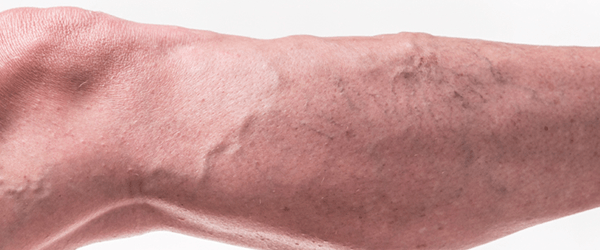
Varicose veins are a common problem for patients as they age. Many consider them a cosmetic annoyance. However, these unattractive blood vessels are the source of discomfort and other medical issues for some sufferers. Patients who visit a vein clinic frequently ask vein doctors about what causes varicose veins.
Varicose Veins Basics
Around 20 to 25 million Americans suffer from varicose veins, according to the UCDavis Health System. These unsightly vessels are visible through the skin and typically resemble knotted cords. They are usually purple or blue and often develop on the legs, although they can form anywhere on the body. Hemorrhoids are actually a type of varicose vein.
The role of veins is to return blood from the lower parts of the body to the heart. The one-way valves in veins that prevent blood from flowing backward play a crucial role in the development of varicose vessels. Patients with varicose veins sometimes experience medical complications such as blood clots, leg swelling, phlebitis, pain, and skin changes, MedlinePlus reports.
Vascular Surgeons Outline Causes and Risk Factors
Vein doctors indicate that venous insufficiency is the cause of varicose veins. Valves sometimes weaken with age or as the result of injury. As a result, blood, already fighting gravity, flows backward and pools behind a defective valve. This pooling increases pressure inside the vein, causing the vessel to become enlarged. In some predisposed individuals, stretching of vessel walls results in varicose veins or their smaller cousins, spider veins.
The University of Chicago Medicine cites these risk factors:
- Aging
- Injury to a leg
- Obesity
- Hormonal factors
- Family history
- Smoking tobacco
- Pregnancy
Vascular surgeons also cite vascular birth defects, being female, and sitting or standing for extended periods as factors that raise risk.
Varicose Vein Treatment Options
Physicians can offer sufferers several kinds of options to get rid of varicose veins or at least minimize their impact. However, no vein treatment will prevent new vessels from forming.
MedlinePlus categorizes available treatments as:
- Conservative measures: Losing weight, elevating the legs, and wearing compression stockings
- Sclerotherapy: Injecting a solution that causes a vein to harden, then disappear
- Ablation: Utilizing heat to eliminate a vein via a technique like the Venefit procedure, formerly called the VNUS Closure, that uses radiofrequency energy
- Microphlebectomy: Using tiny cuts through which physicians remove targeted veins
- Bypass: Rerouting blood around a blocked vein via surgery
- Angioplasty with stenting: Opening a vein that is narrowed or blocked using a balloon and placing a small mesh tube in the vessel to keep it open
Treatment for varicose veins begins with a consultation with a vascular specialist at a vein clinic. This physician will indicate the most appropriate options for each patient. Fortunately, thanks to the development of high-tech procedures, extreme therapies like vein stripping that were once the norm are seldom used.
